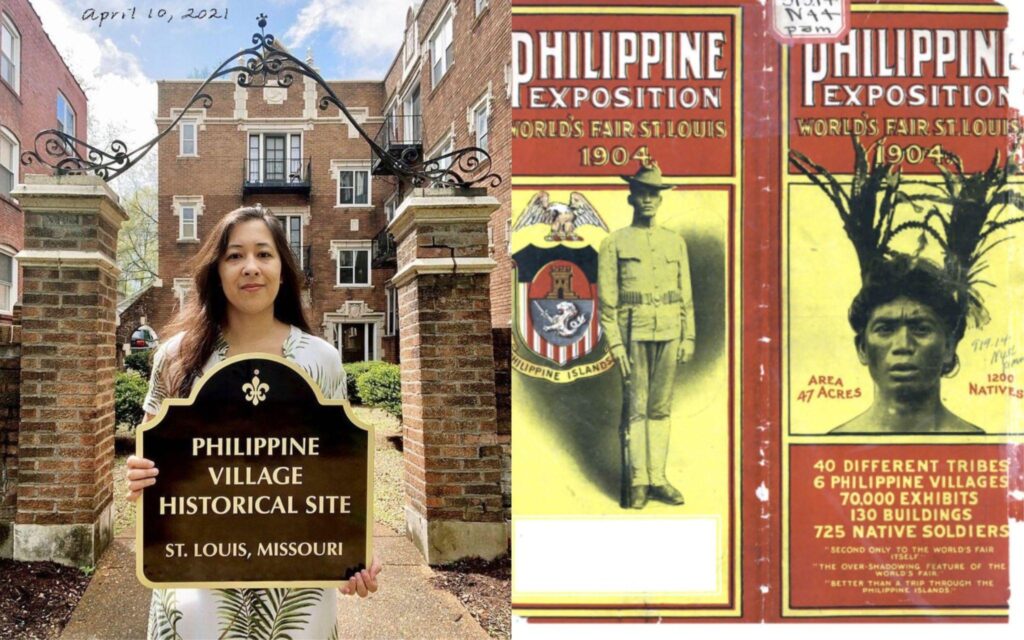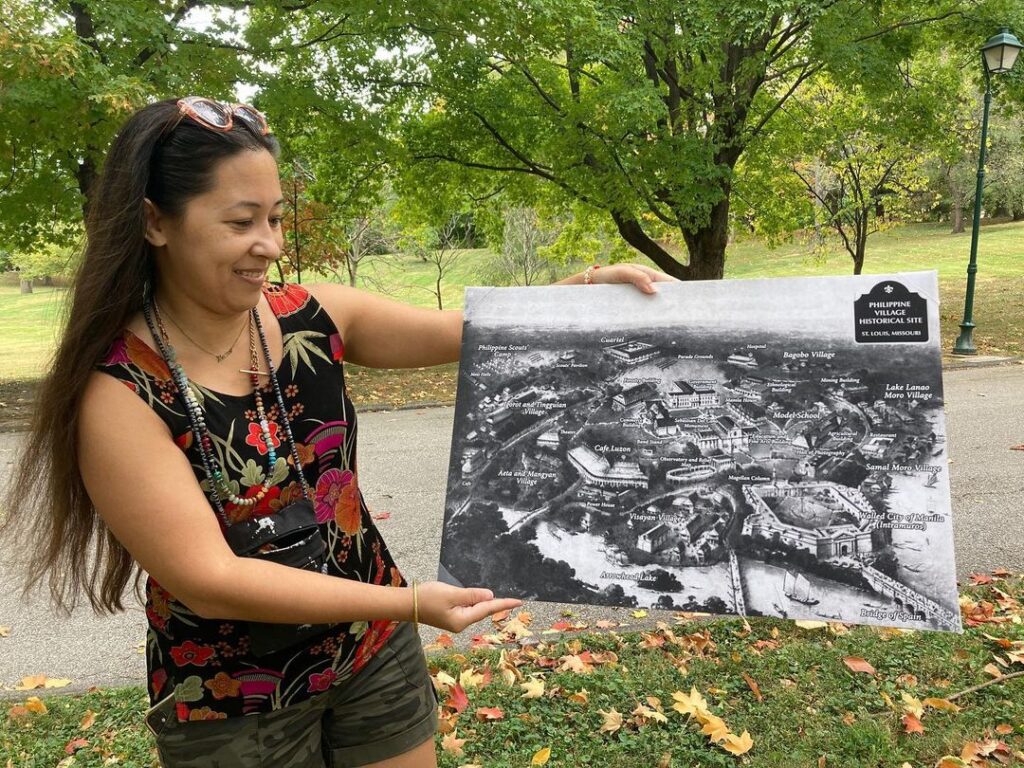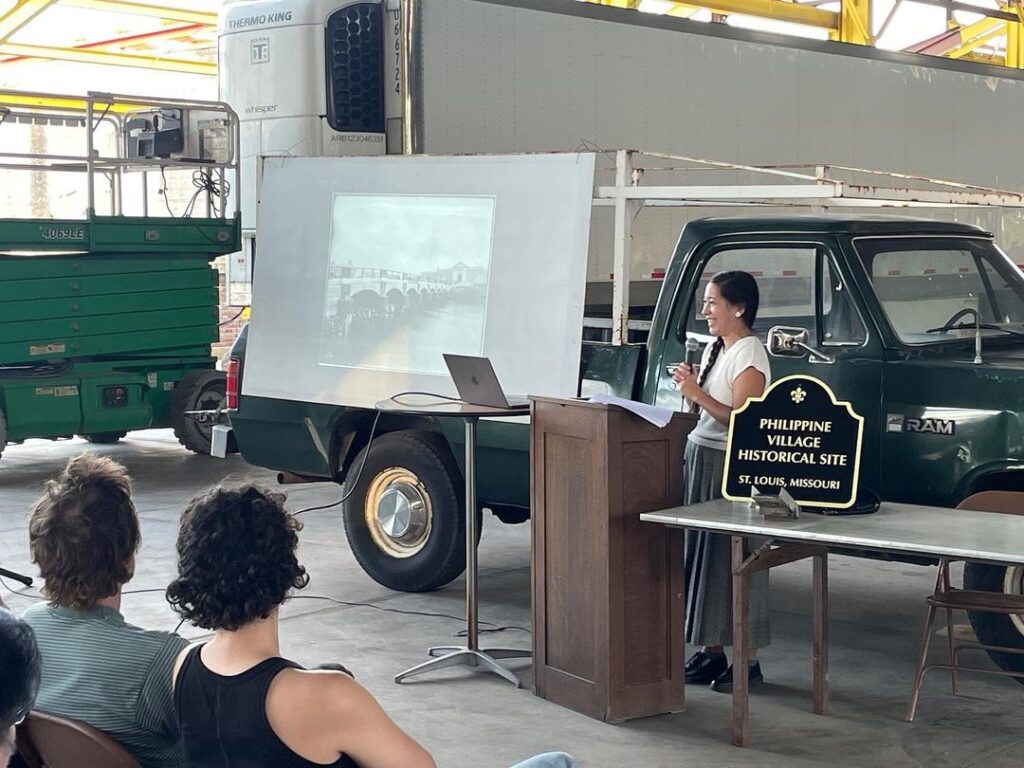Permanent historical marker to commemorate Philippine Village at the 1904 St. Louis World’s Fair in Missouri

Philippine historical marker to commemorate Philippine Village at the 1904 St. Louis World’s Fair in Missouri | Photo from Janna Añonuevo Langholz/Instagram and the University of Michigan Library website
The Board of Aldermen in the City of Clayton just approved a proposal to erect a permanent commemorative marker honoring the historical site where over a thousand Filipinos from at least 10 ethnic groups were misrepresented and mistreated during the 1904 St. Louis World’s Fair.
Second-generation Filipino-American interdisciplinary artist Janna Añonuevo Langholz announced the development on her Instagram this week. She led the efforts for the said permanent Philippine historical marker as early as April 2021 when she began carrying a sign around her neighborhood to bring attention to the injustices that occurred in 1904. In October 2022, the city began the process of officially commemorating the site.
Langholz was born on the site of the 1904 St. Louis World’s Fair, also known as the Louisiana Purchase Exposition.
She documented the aftermath of the fair in an attempt to honor the remains of indigenous people who died and were buried in St. Louis in 1904 as part of her site-specific practice and research investigating the US colonization of the Philippines between 1898 and 1946.

Langholz with a map of the Philippine Village. Photo from Janna Añonuevo Langholz/Instagram
A showcase of the newest colony
The eight-month fair that attracted millions of visitors with marvels of technology, agriculture, art, and history also had anthropological exhibits that cast Filipinos of Negrito, Igorot, Moro, and Visayan ethnicity in a racist and imperialist light.
After the Philippine-American War ended in 1902, the future president and then-governor-general of the Philippines, William Howard Taft, wanted to showcase the newest colony to his fellow Americans. The American government spent $1.5 million in an effort to demonstrate that Filipinos were far from ready to self-govern, thus justifying its colonization.
You may also like: 7 Remarkable Filipino American Activists and Their Impact
During the fair’s run, Indigenous people’s practices, like sacrificing dogs during rituals, were exaggerated to make them seem “primitive.” Some members of the Philippine Village were made to eat dogs regularly to drum up attendance. These exhibits not only inhumanely portrayed and treated these ethnic groups but also created negative stereotypes of Filipinos that persisted through generations.
Honor and remember the lives of Filipinos

Langholz giving a lecture about the Philippine Village | Photo from Janna Añonuevo Langholz/Instagram
In the last three years, Langholz collected newspaper clippings from 1904 and posted each event on Instagram on the same day it happened 117 years ago. The project dubbed “Today in 1904,” she said, overlaps the year 1904 and the present time as if they were occurring simultaneously in a repeating time loop.
She added that she created this resource to honor and remember the lives of the individuals from the Philippines who participated in the 1904 St. Louis World’s Fair who have gone unnamed, unrecognized, or forgotten over time.
“While searching for those who died during the fair, I came across many other names and stories in the process, including several of my relatives. I hope that this also can serve as a genealogical resource to others and be helpful in the process of locating descendants.”

